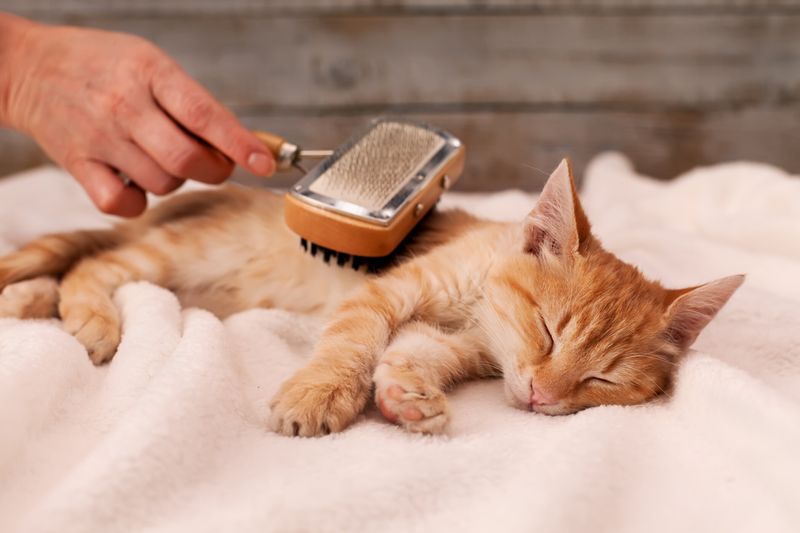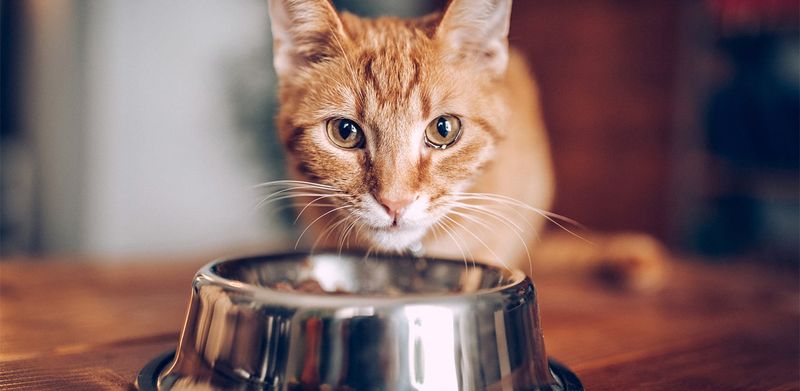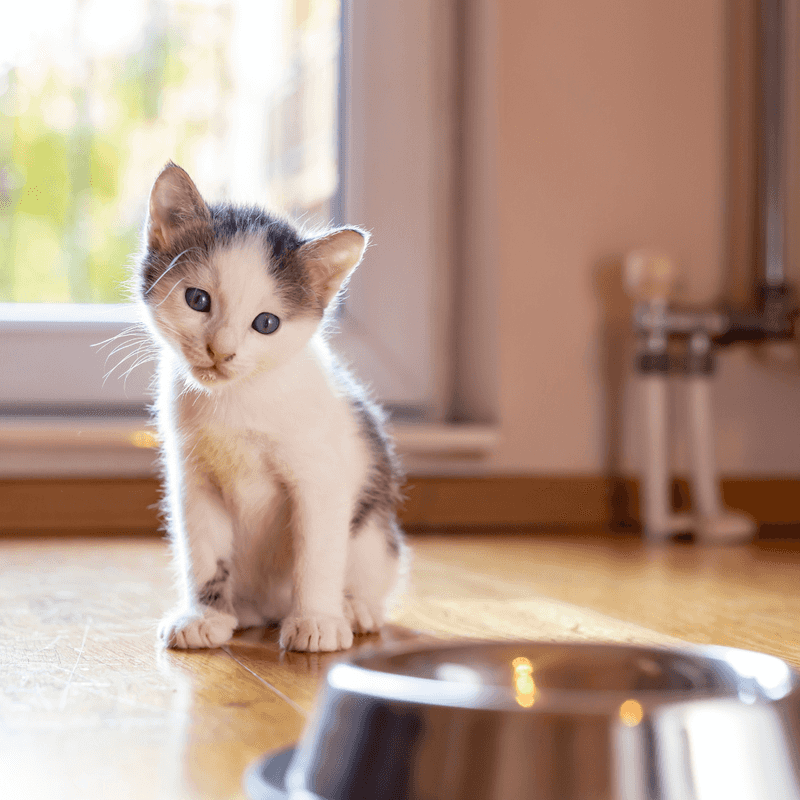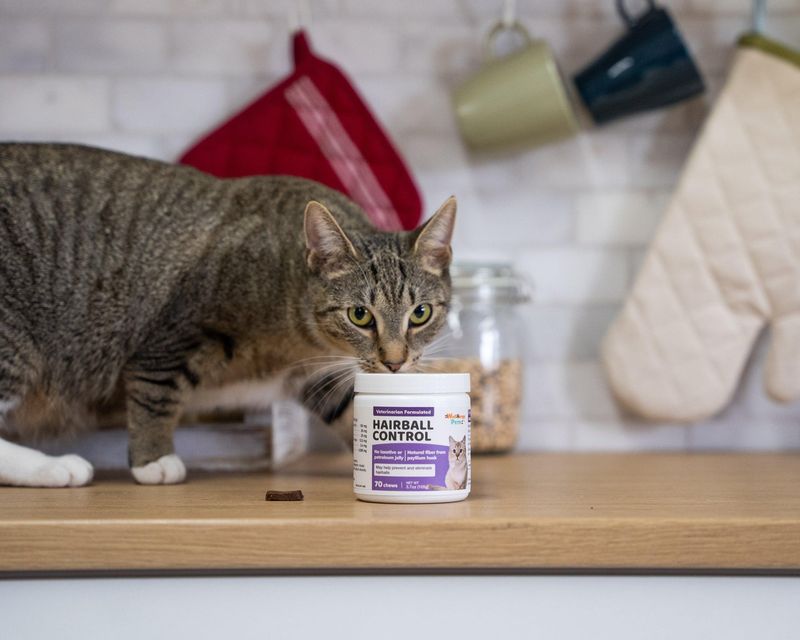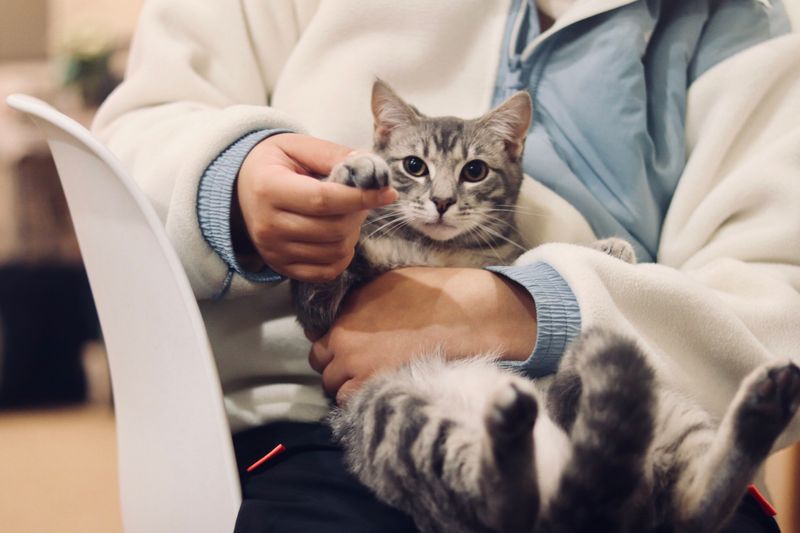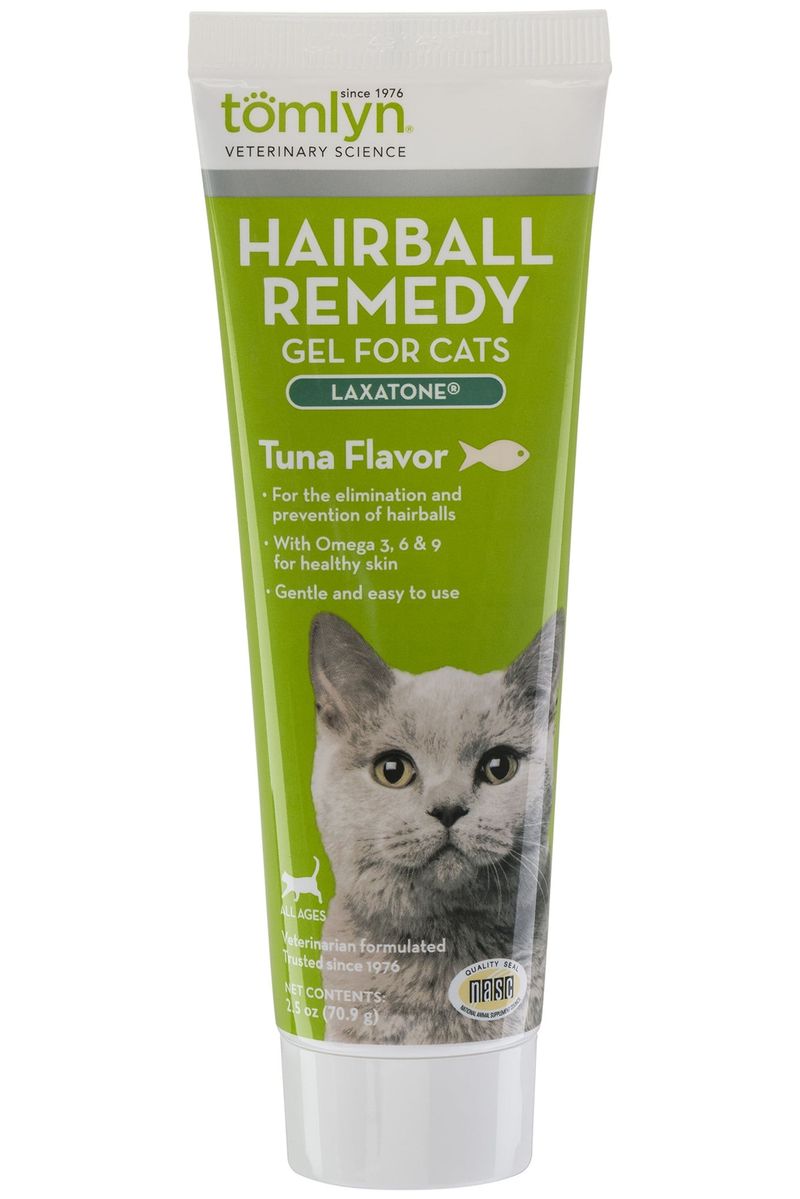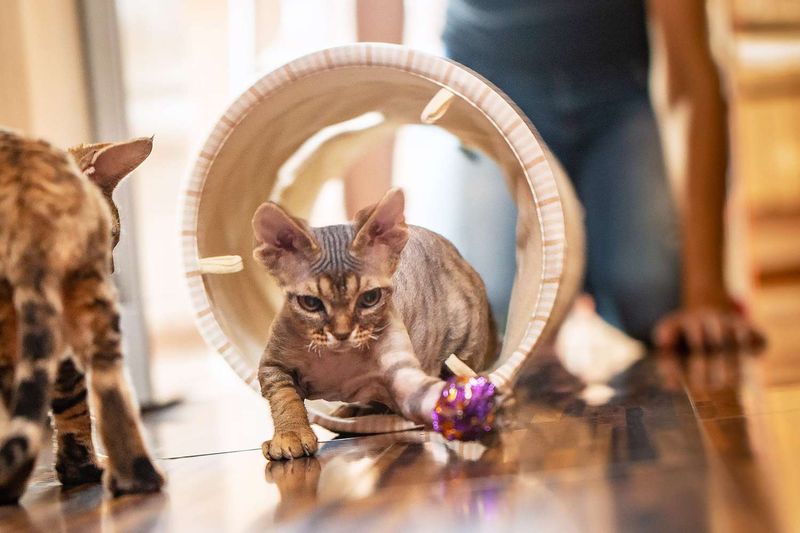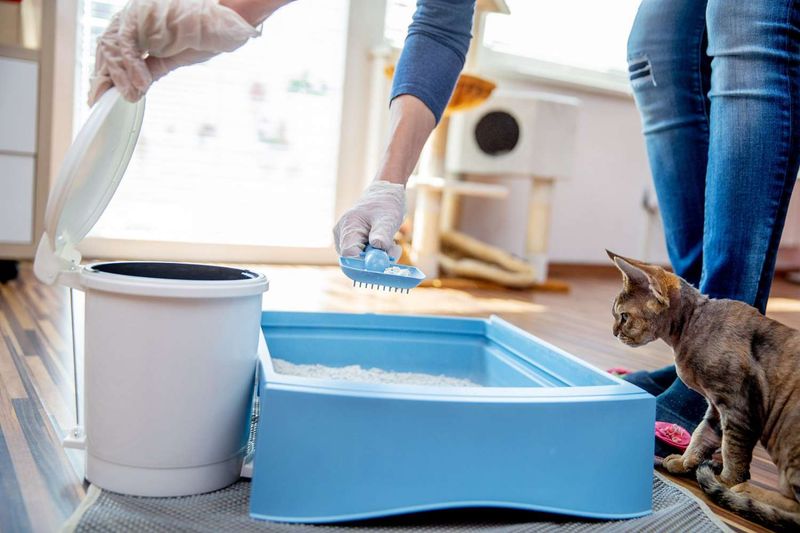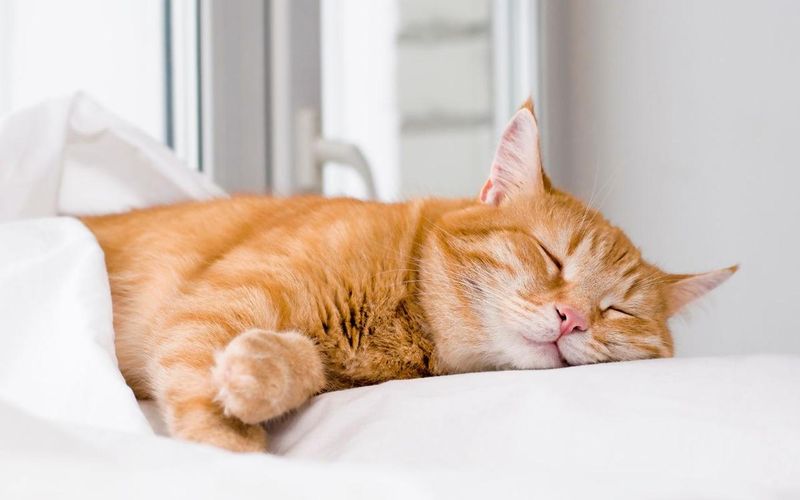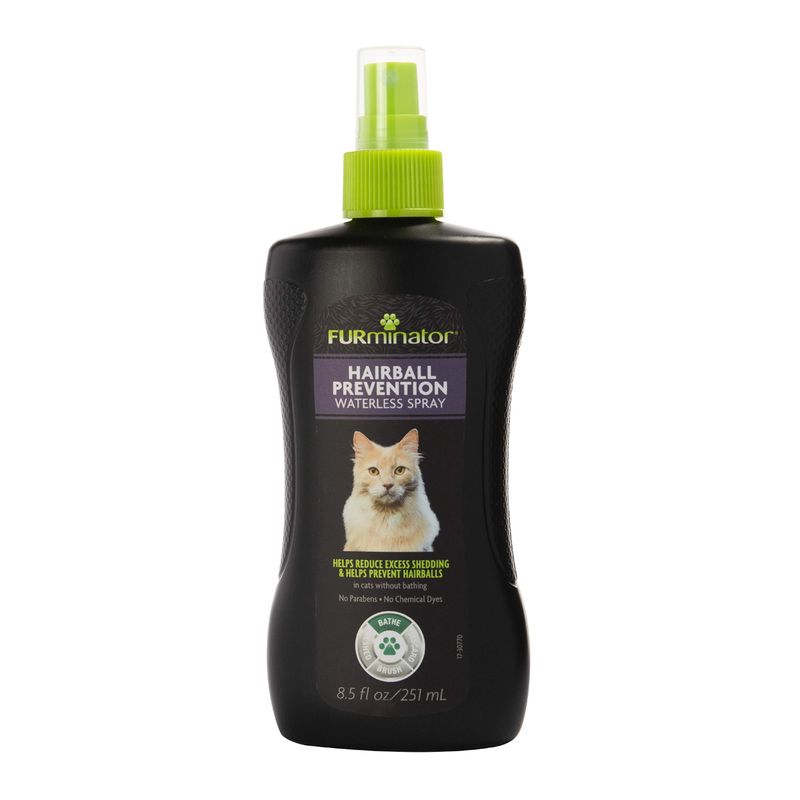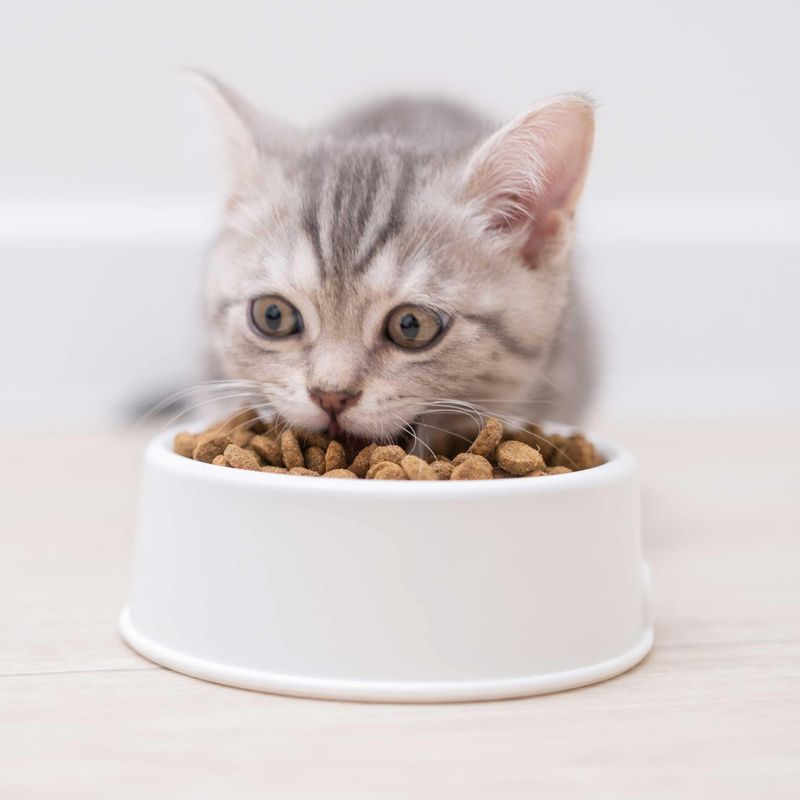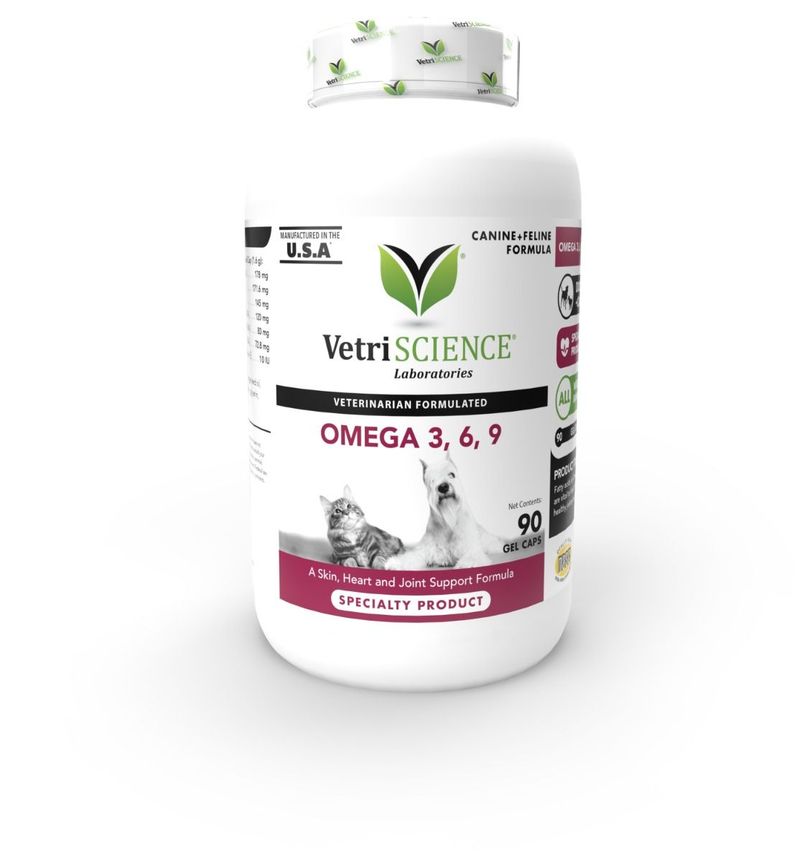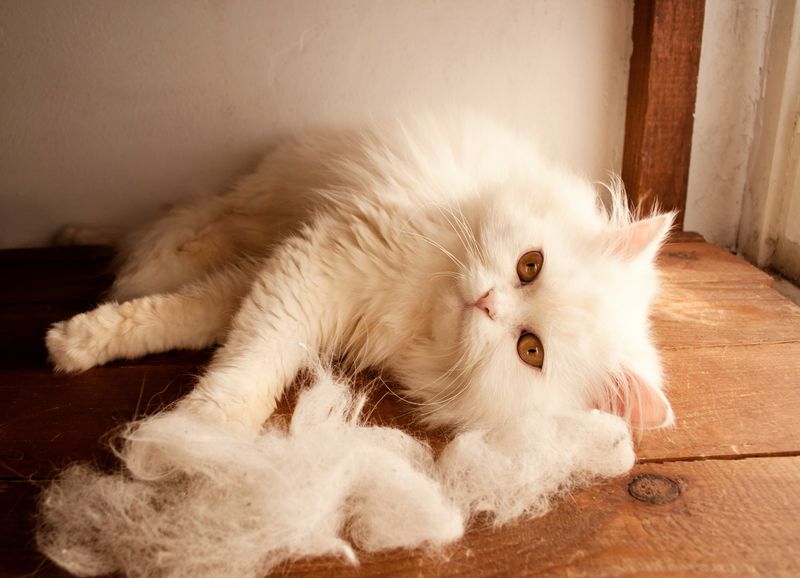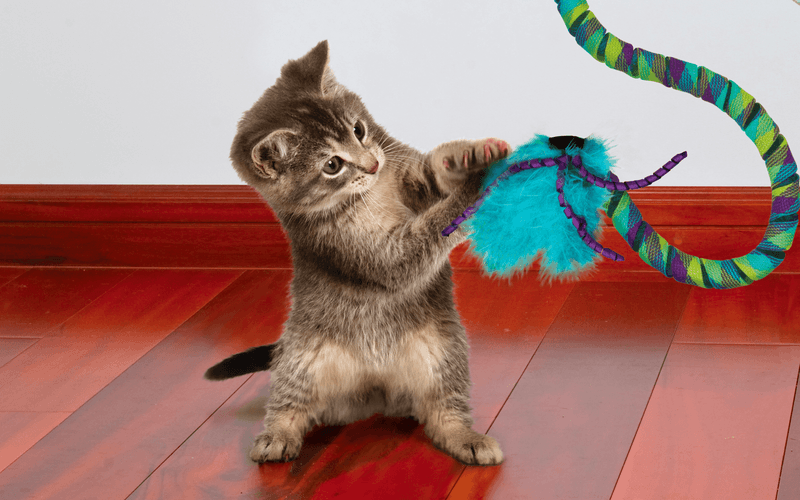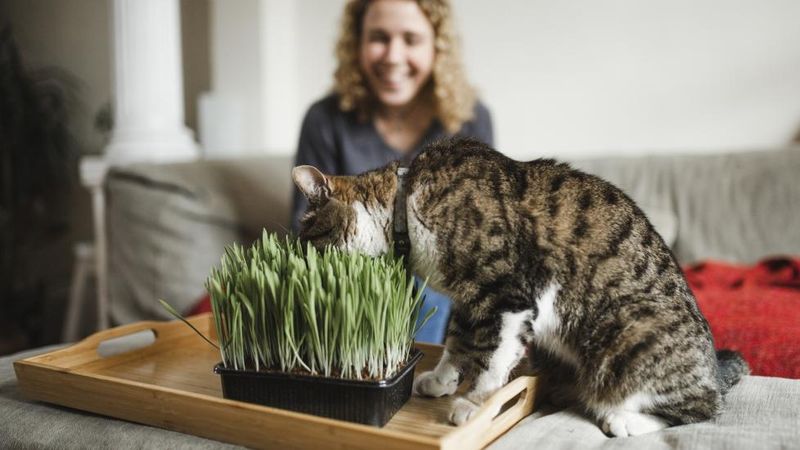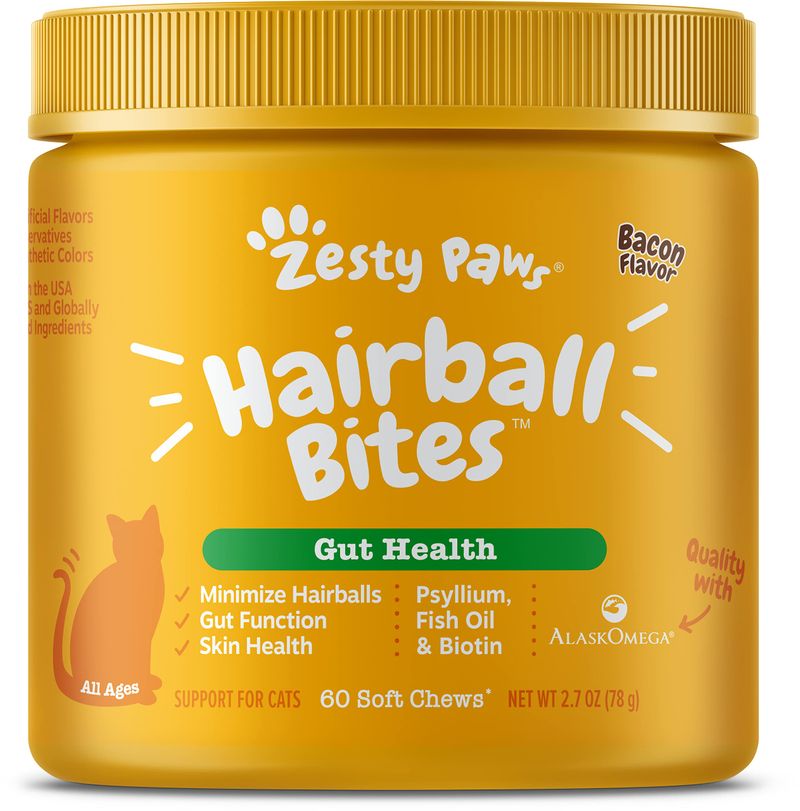📖 Table of Content:
- 1. Regular Grooming
- 2. High-Fiber Diet
- 3. Hydration is Key
- 4. Specialty Hairball Treats
- 5. Regular Vet Check-ups
- 6. Lubricant Supplements
- 7. Environmental Enrichment
- 8. Regular Litter Box Cleaning
- 9. Stress Reduction Techniques
- 10. Hairball Prevention Products
- 11. Balanced Nutrition
- 12. Omega-3 Supplements
- 13. Regular Exercise
- 14. Control Shedding
- 15. Interactive Feeding Toys
- 16. Provide Cat Grass
- 17. Add Oils to Your Cat’s Food
Hairballs are a frequent issue for many cat owners, often leading to frustration. While they may seem like a minor inconvenience, they can actually cause discomfort and even health problems for your cat. Addressing the root causes of hairballs is key to preventing them from becoming a recurring issue.
Cats naturally groom themselves, ingesting loose fur, which can lead to hairballs if not properly managed. Though this is normal behavior, excessive hairballs can be a sign of underlying issues, such as poor diet or grooming habits. With some proactive care, it’s possible to minimize their frequency and improve your cat’s overall well-being.
Reducing hairballs requires a combination of strategies, including regular grooming and dietary changes. By taking small steps, your cat can be kept comfortable and healthy while avoiding the unpleasant side effects of hairballs. Here are 17 tips to help keep your feline friend hairball-free and thriving.
1. Regular Grooming
Frequent fur maintenance is key to minimizing hairballs. By gently combing your cat’s coat, you eliminate loose fur that could otherwise be ingested. This not only prevents hairballs but also creates an opportunity to bond with your furry friend.
Choose a brush that suits your cat’s fur type, whether it’s short or long. Incorporating this routine into your weekly schedule will help tremendously. Keeping those loose hairs out of your cat’s system means fewer hairballs and a healthier pet overall. Your cat will thank you for it!
2. High-Fiber Diet
For effective hairball prevention, a high-fiber diet can make a significant difference. Fiber facilitates the passage of swallowed hair through the digestive tract. Opt for cat food specifically formulated with fiber to reduce hairball formation.
These foods are designed to aid digestion and reduce the risk of hairball-related blockages. Always consult your veterinarian before making significant changes to your cat’s diet. They can recommend a suitable high-fiber option that fits your cat’s needs and lifestyle. Watch your cat thrive on their new diet choice!
3. Hydration is Key
Ensuring your cat stays hydrated is vital. Proper hydration aids digestion, helping ingested hair move through the system smoothly. Consider investing in a cat water fountain, which encourages cats to drink more by providing a constant flow of fresh water.
Cats are often reluctant to drink standing water, so a fountain can make a significant difference. Additionally, moist canned food can supplement their water intake. Always provide clean, fresh water daily to support your cat’s hydration needs. Keeping your cat well-hydrated is an essential step in hairball management.
4. Specialty Hairball Treats
Offering specialty hairball treats can help keep hairball problems in check. These treats often contain fiber and lubricants that support digestion and ease hair through the tract. They serve as both a delicious snack and a practical supplement to your cat’s diet.
Introduce these treats gradually and monitor your cat’s response. They come in various flavors to suit even the pickiest eaters. Treats should only complement a balanced diet and not replace meals. Regular use can significantly aid in reducing hairball incidents, making them a must-have in your cat care arsenal.
5. Regular Vet Check-ups
Routine veterinary check-ups are essential to ensure your cat’s overall health and to catch potential hairball issues early. Your vet can provide professional advice on diet and grooming habits tailored to your cat’s specific needs.
During these visits, discuss any concerns about hairballs you may have. Your vet might suggest specific treatments or dietary adjustments. These appointments are not only for hairball concerns but also for maintaining your cat’s holistic health. Keeping a regular schedule helps prevent potential problems in the future, including those troublesome hairballs.
6. Lubricant Supplements
Lubricant supplements can assist in moving hair through your cat’s digestive system more efficiently. These are usually available in gel form and can be given directly or mixed with food. Products often contain natural oils that ease the passage of hair.
Begin with small amounts to see how your cat reacts, and always follow the dosage instructions. It’s essential to combine these supplements with other preventive measures like grooming and diet. Used correctly, lubricant supplements can be a valuable tool in your hairball prevention strategy.
7. Environmental Enrichment
Enriching your cat’s environment can indirectly reduce hairball formation. Engaging your cat in playtime and providing interactive toys can decrease stress, which sometimes contributes to excessive grooming. The more they are entertained, the less likely they are to ingest hair.
Consider installing cat trees or shelves to encourage physical activity. These activities can also provide mental stimulation. An enriched environment ensures your cat is happy and healthy, reducing the likelihood of hairball issues. Keep your feline friend entertained and engaged for their overall well-being.
8. Regular Litter Box Cleaning
Maintain a clean litter box to monitor your cat’s digestive health effectively. Observing your cat’s stool can give you insights into potential hairball problems. Keeping the box clean encourages regular use, essential for spotting any irregularities.
Frequent cleaning also minimizes stress, which can exacerbate grooming habits. If you notice changes in stool consistency, consult your veterinarian. A clean litter box is part of a healthy environment and can help you track your cat’s health. This routine task plays a crucial role in preventing hairball complications.
9. Stress Reduction Techniques
A stress-free cat is less likely to over-groom, which reduces the chances of hairballs. Provide quiet, peaceful spaces for your cat to feel safe and relaxed. Using calming music or pheromone diffusers can help maintain a soothing atmosphere in your home.
Identify stress triggers such as loud noises or changes in the household, and try to minimize their impact. Interactive play can also help distract and relax your cat. A stress-free cat is less likely to over-groom, thus reducing the chances of hairball formation. Prioritizing your cat’s emotional well-being is key.
10. Hairball Prevention Products
Explore various hairball prevention products available in the market. These include special diets, treats, and supplements designed to minimize hairball formation. Some products may contain additional nutrients that support coat health and reduce shedding.
Before purchasing, research and consult with a veterinarian to choose the best option for your cat. These products, when used in conjunction with other preventive measures, can be very effective. Regular usage can enhance your cat’s quality of life by keeping those pesky hairballs at bay. Tailor your selection to fit your cat’s unique needs.
11. Balanced Nutrition
The right nutrition is the first step in controlling hairballs. Your cat’s diet should contain an optimal blend of proteins, fats, and carbohydrates. This balance encourages proper digestion, which helps prevent hairball issues.
Incorporate foods rich in Omega-3 and Omega-6 fatty acids, which can help reduce shedding. Regularly review your cat’s diet in consultation with a veterinarian to maintain optimal health. A well-balanced diet supports overall well-being and minimizes hairball issues, providing a solid foundation for your hairball prevention efforts.
12. Omega-3 Supplements
Supporting your cat’s health with omega-3 supplements can reduce shedding, thus minimizing hairball problems. These fatty acids not only promote a healthy coat but also contribute to joint wellness and inflammation control.
Consult with your veterinarian for the appropriate dosage and product selection. Omega-3 supplements can be found in liquid or capsule form and are easily added to your cat’s diet. They are a simple yet effective addition to your hairball prevention strategy. Keeping your cat’s coat healthy minimizes the amount of hair they ingest, thus reducing hairballs.
13. Regular Exercise
Keeping your cat active through regular exercise is key to preventing hairballs. Physical movement helps stimulate digestion, allowing ingested hair to move more smoothly through the digestive system.
Engage your cat with toys or play sessions to encourage movement. Exercise also helps manage weight, reducing the risk of health issues that can exacerbate hairball problems. Make playtime a routine part of your day together. A physically active cat is less likely to develop hairballs, making exercise an integral part of your prevention plan.
14. Control Shedding
Managing shedding is vital in controlling hairball production. Regular grooming sessions, along with a balanced diet, can significantly decrease the amount of loose fur your cat ingests. Use de-shedding tools designed for your cat’s coat type.
Seasonal shedding may require more frequent grooming to keep loose hairs at bay. Consider supplements that promote coat health, which can further reduce shedding. By controlling shedding, you lessen the likelihood of hairballs, ensuring a happier, healthier pet. Consistency in these practices will show tangible results over time.
15. Interactive Feeding Toys
Offering interactive feeding toys can help regulate your cat’s eating speed and stimulate their mind. These toys promote instinctual hunting actions, which may alleviate stress and reduce the likelihood of hairballs.
They also promote slower eating, aiding digestion and reducing the risk of hairball formation. Choose toys that challenge your cat but are appropriate for their skill level. Incorporating interactive feeding toys into your routine can improve your cat’s overall quality of life. They offer a fun way to combine feeding time with play, supporting both mental and physical health.
16. Provide Cat Grass
Cat grass acts as a natural hairball remedy by providing essential fiber that helps fur pass through your cat’s digestive system. Most pet stores sell ready-to-grow kits with wheat, oat, or barley seeds that sprout within days.
Place the grass in a sunny spot where your cat can access it easily. Many cats enjoy a daily nibble, which can significantly reduce hairball issues while providing entertainment and enrichment for your indoor kitty.
17. Add Oils to Your Cat’s Food
Healthy oils work wonders for hairball prevention by lubricating your cat’s digestive tract. A teaspoon of olive oil or fish oil mixed into food twice weekly helps fur slide through the digestive system rather than clumping into hairballs.
Fish oils offer the added benefit of omega-3 fatty acids, which improve skin health and reduce excessive shedding – addressing the root cause of hairballs. Salmon oil is particularly effective and often appealing to finicky felines. Start with small amounts to prevent digestive upset. Most cats adjust quickly, and you’ll likely notice fewer hairballs within a couple of weeks, along with a shinier coat and healthier skin.

